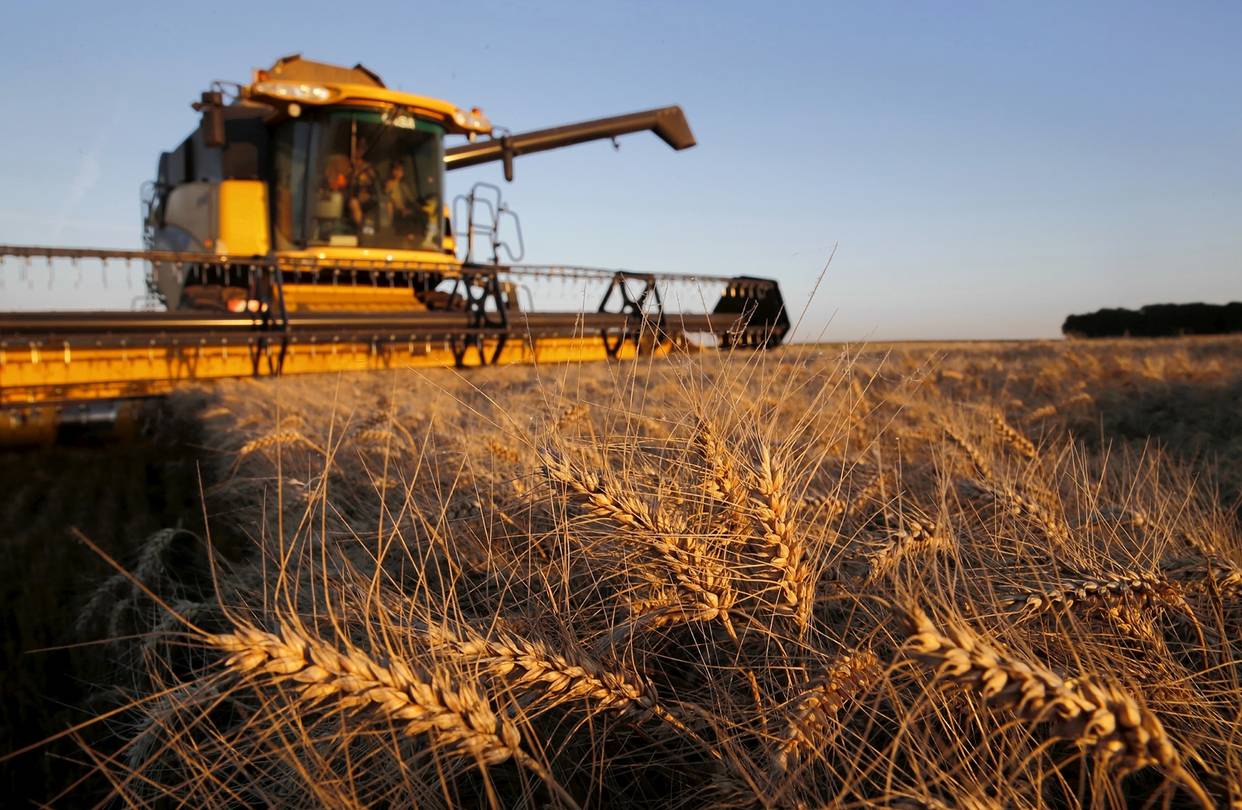Australia: Harvest pressures prices, proteins surprise

Harvesting of wheat and barley is hitting top pace in the northern half of New South Wales to put pressure on a well-covered domestic market.
The impact has been that growers are concentrating on selling harvested commodities other than cereals, and finding some pleasant surprises in what for most is a low-yielding year.
Lower-than-expected wheat proteins so far have been disappointing for those hoping to sell or export premium milling grades, but in barley, the lower proteins have pushed a larger-than-expected tonnage into malting.
In the southern market, little selling is occurring ahead of harvest, now just starting in early areas, as growers wait to find out and yield and quality achieved before committing tonnage.
| Oct 19 | Oct 12 | |
| Barley Downs | $455 | $460 |
| SFW wheat Downs | $455 | $460 |
| Sorghum Downs | Mar-Apr $435 | $435 |
| Barley Melbourne | $362 | $365 |
| ASW Melbourne | $410 | $420 |
Table 1: Indicative prices in Australian dollars per tonne.
The cereal harvest in Central Queensland is nearing completion, and is around one-third through in southern Qld.
In northern New South Wales, roughly 10 percent has been harvested, and protein has been surprisingly low on wheat and barley.
Agvantage Commodities Narrabri-based broker Brendon Warnock said crops harvested to date have generally been good quality, and averaging a lower-than-expected protein level of 11-12pc, with some into the 10s, and others above 12.
A dry finish, as experienced this year, usually boosts grain protein, but this was not the case this year.
“The explanation is that high rainfall last year leached away stored nitrogen, and because we didn’t get in-crop rain this season, the nitrogen spread in crop wasn’t able to reach the roots,” Mr Warnock said.
“Generally, yields at 2.5-3.5t/ha…are slightly better than they were expecting.”
The mostly dry finish to the growing season has ripened barley, canola, chickpeas, faba beans, and wheat all at once, and Mr Warnock said growers therefore had a range of off-the-header commodities to sell for cash.
“Growers are saying: What have I got? What do I want to take to market now?”
Barley has been the surprise packet in its low protein to date, which has pushed more early tonnage than expected into the malting market at premiums of up to $20/t or more above feed.
“A fair bit of barley has gone malting around Moree.”
Now that malting buyers have filled their orders, and then some, and the barley harvest is in full swing in northern and central NSW, the Downs market north of the Qld-NSW border has seen some supply-side pressure.
It means homes for November-December deliveries are getting harder to find, particularly as feedlots are now busy receiving grain just harvested on their own farms, or from regular suppliers nearby.
On the Liverpool Plains, Quest Commodities principal Jayne Barker said good-quality grain was coming off from earlier areas in north-west NSW, and the strength of bids at depots indicated export business was being eyed.
“At this stage, depot prices are higher than the local feed market for most things, and we’re not seeing a lot of liquidity,” Ms Barker said.
Harvest is just getting under way on the Liverpool Plains.
“They’re into canola and barley, and a bit of faba-bean harvesting.”
Consumers on the Liverpool Plains are buying SFW wheat for around $435/t delivered, down around $10/t on recent values, amid thin volume.
Barley is trading at around $420/t delivered Liverpool Plains consumer.
“The barley market is a bit more fluid, and is probably under a bit of pressure from crops in the Central West.”
Central West barley is just starting to hit the bins, and is destined for a split of on-farm use for those with livestock, and the domestic and export markets.
In the southern market, growers appear keener to sell canola, lentils and malting barley than wheat or feed barley.
The result is limited volume coming from growers into the domestic and export feedgrain markets.
“A lot of people want to sell a load or two because they’re cleaning out silos, and places to put those are running out,” one trader said.
The relatively kind end to the southern growing season in Victoria, eastern South Australia, and southern New South Wales is expected to limit the amount of malting barley downgraded into feed segregations.
This will limit the amount of southern barley now being harvested and destined for the northern feed market, and growers and traders are eyeing the Chinese appetite for Australian malting in the reopened market.
“People think it will be a big year for malting.”
Likewise, southern growers are unsure about yield and quality of wheat still standing in the paddock, and have zero interest in forward selling on multigrade contracts.
Southern growers are expecting to see solid demand from domestic flour millers and exporters, with pundits tipping the south’s wheat to have higher-than-average protein because it had more in-crop rain that allowed plants to utilise applied nitrogen.
Some early barley crops in the Victorian and South Australian Mallee are being harvested now, but windrowing of canola is the major activity now taking place in southern NSW and northern Vic.
Read also
Wheat in Southern Brazil Impacted by Dry Weather and Frosts
Oilseed Industry. Leaders and Strategies in the Times of a Great Change
Black Sea & Danube Region: Oilseed and Vegoil Markets Within Ongoing Transfor...
Serbia. The drought will cause extremely high losses for farmers this year
2023/24 Safrinha Corn in Brazil 91% Harvested
Write to us
Our manager will contact you soon



